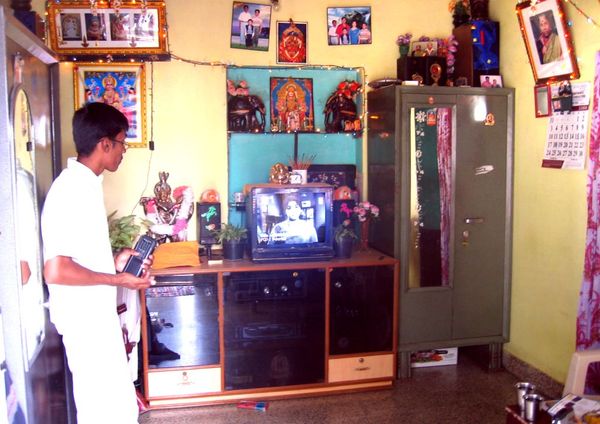by Aditya Dev Sood

One day, I came home from school to a big commotion in the living room. My dad was working with an electrician and a mason, and they were together struggling to figure out how this enormous apparatus was going to work. What is it, I asked? A split-unit air-conditioner, my dad said! The thing was a deep and dark gray, with fierce frowning fins all around. It sat in our living room that day like a fine objet, detached slightly from the wall into which its cables would soon run, locking firmly into the masonry and coming out the other side, into the sunless side yard we then had, where I also parked my bicycle. The thing was powerful alright, having been designed for industrial use, and it hummed quietly to itself, rather than roaring and groaning in the way air-conditioners usually did back then. No one in our friends or family circle had ever seen or heard of a split-unit AC, and it was quite the source of living-room family pride.
My dad had bought the thing at an auction at the American embassy, which was upgrading from these four-year-old split-units to central air-conditioning. He must have paid, maybe forty thousand rupees for the thing, almost two thousand bucks in 1980s US dollars. But even this second-hand industrial unit must have seemed a good investment, as compared with the kinds of ACs that were available in the market then — old technologies that were made even more expensive by heavy import duties. And when I think back on it, I realize that many of the appliances and consumer goods we enjoyed in our home came from these sales at diplomatic compounds, or else imported by someone else and then sold locally. Our enormous six-burner stove-oven, our banana-yellow Isuzu car, our small upstairs stereo system, our several VCRs, even my silver ten-speed bike, all of these appurtenances came into lives second-hand, through foreign contacts. Nothing like them was then available in India's local markets.
Eventually our stove-burner was rusting out, so we had to send it to the welder to get a new sheeting on the back, the better to keep the rats out of the kitchen. The Isuzu was in and out of the shop a lot, and we once considered switching out its engine with a new local one. And when the woofer on the small stereo tore, I took the two speakers to Lajpat Rai Market to have them replaced with a spare ripped out of another speaker. To participate in consumer culture in India back then was like living in a Mad Max movie — the fragments of a more advanced technological and material culture surrounded us, and we made tactical use of whatever we could find. But we seemed doomed never to be able to inhabit that technological horizon. The technology of everyday life seemed to come to us from far away, and always without proper distribution, support, service.
Read more »


